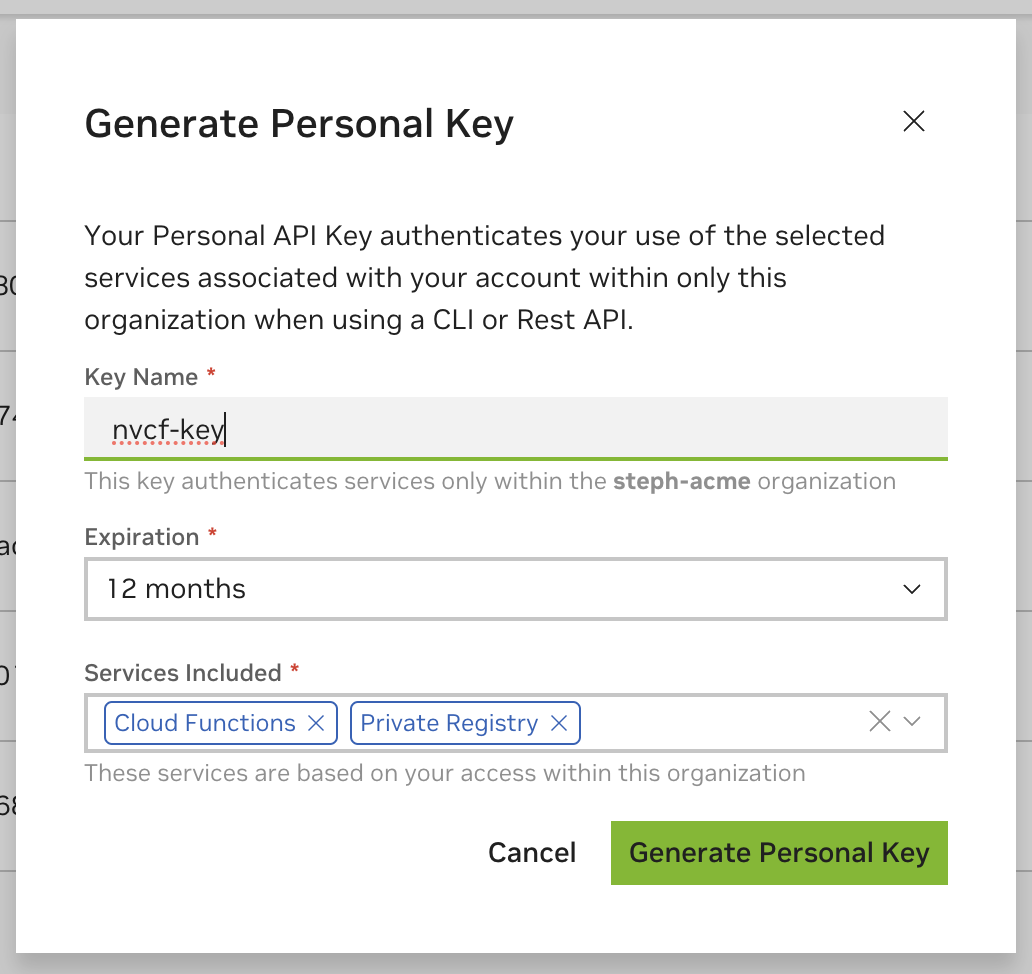API
Primary Domain (Function Management): https://api.ngc.nvidia.com
NVCF Domain (Function Invocation, Queue Details): https://api.nvcf.nvidia.com
OpenAPI Specification
This page is a brief overview of using the NVCF API and does not cover all endpoints.
Please refer to the OpenAPI Spec for the latest API information. The quickest way to begin using NVCF APIs is via the Postman Collection.
The NVCF API is divided into the following sets of APIs:
API Versioning
All API endpoints include versioning in the path prefix.
Authorization
The NVCF API supports NGC API key-based authorization for calling the API directly, or indirectly via the NGC CLI and NGC SDK.
The generated NGC Personal API Key will also be used for pushing and pulling containers, models, resources and helm charts to the NGC Private Registry to use during function creation.
Generate an NGC Personal API Key
The API Key can be generated via your account in the Personal Keys Page.
Warning
You must have the Cloud Functions and, if using, Cloud Tasks roles associated to your user at the Organization level not the Team level for the generated key to work correctly. See here for more information.


It’s recommended that the API Key that you generate includes both NGC Catalog and Private Registry services for seamless usage with the NGC CLI.
Warning
API Key scopes are static. This means if the key is lost, it must be destroyed and recreated.
For more information about NGC API Key management see the NGC API Key documentation.
API Key Usage
The API Key is passed in the Authorization header.
Authorization: Bearer $API_KEY
API Key Scopes and Domains
Note
There are multiple API key types within NGC. We strongly recommend using the NGC Personal API Key for complete NVCF API compatibility.
Required domain names are documented below and are also pre-filled within our Postman Collection.
Our OpenAPI Spec also describes the scopes required for each endpoint.
NVCF API Status Codes
Please refer to the OpenAPI Docs for other possible status code failure reasons in cases where they are not generated from your inference container.
For Function States, see Function Lifecycle.
Note
To easily differentiate between errors originating from within NVCF’s API or control plane, and your own inference container, determine if the type field includes inference-service (indicating the error is from your inference container)

